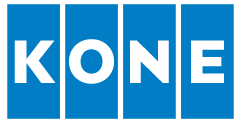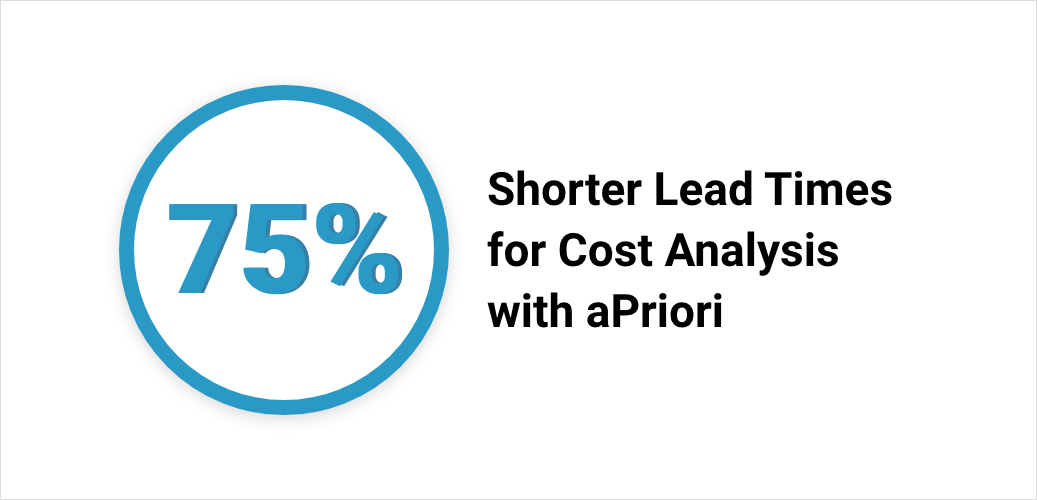Case Study
How KONE Streamlines and Standardizes Should Cost Analysis with aPriori
Kone offers products that are highly customized to meet customer and regulatory requirements across many different regions of the globe. They needed the ability to perform should cost modeling across this complex global supply chain while keeping pace with rapid design iteration and an agile methodology.
In this case study, we look at how aPriori helped Kone speed up and standardize their approach to should costs while identifying more opportunities for saving.

Company Details
Industry
Elevator Manufacturer
Number of Employees
60,000
Revenue
€11+ Billion
Website
aPriori Product
aP Pro; aP Analytics
The Problem
Performing Timely Should Cost Analysis for Highly Customizable ProductsThe Solution
Rapid, Standardized Should Cost Analysis Using aPrioriWho is KONE?
An industry-leading manufacturer of elevators and escalators, Kone provides innovative solutions for the installation, maintenance, and modernization of these systems. Founded in 1910 and headquartered in Helsinki, Finland, Kone is a truly global enterprise with 60,000+ employees distributed across 60+ countries worldwide. This global presence serves over 550,000 customers using over 1.5 million units in service.
Problem: Performing Timely Should Cost Analysis for Highly Customizable Products
The nature of the elevator and escalator market introduces unique design and cost modeling challenges for Kone. These highly customizable solutions come in a huge number of variants, including multiple variants within the same product number. Most of these diverse products are relatively low-volume. For example, small material and manufacturing changes must be made to accommodate the safety codes of different target markets.
This diversity of highly customizable, low-volume offerings made it difficult to adopt a systematic approach to cost modeling. Performing a new cost analysis for each new custom design manually was proving to be a strain on resources, and Kone’s should costing team needed a tool that could help streamline this process. To minimize time-to-market for new customer projects, Kone employs an agile methodology centered on 2-week design sprints, and the right solution would need the ability to rapidly analyze new design iterations.
Kone’s products also employ a wide variety of materials and components, which means each new product requires different cost modeling competencies. This complexity created a situation where different should cost professionals were employing their own methodologies. It also drove delays as projects waited for the availability of multiple personnel. The ideal cost modeling solution would offer the ability to aggregate knowledge from different competencies into a digital thread that standardizes and streamlines cost estimation workflows.
Learn more about how the digital thread ties design, sourcing, and manufacturing together.
Solution: Rapid, Standardized Should Cost Analysis Using aPriori
Kone’s team selected aPriori as a should cost modeling solution that was capable of keeping up with their agile design process. By using data generated by simulating manufacturing in a digital factory, a single should cost professional can rapidly analyze the cost and manufacturability of a design across all relevant competencies. Because aPriori can generate manufacturing cost data for a new design within a few minutes, it is well suited for iterating rapidly, even on an accelerated sprint schedule.
aPriori also provides a single source of truth for cost benchmarking work, helping standardize should cost methodology. Its ability to aggregate should cost knowledge and experience from across the organization reduces delays–less experienced team members are no longer dependent on senior subject matter experts to perform and validate cost analyses. And, because aPriori provides detailed design feedback, it can help junior engineers continue to develop their own skills.
Results: 75% Shorter Lead Times Help Should Costs Keep Pace with an Agile Design Process While Driving New Savings
Since adopting aPriori to empower their agile design methodologies, Kone has succeeded in dramatically reducing lead times for should cost work. Within one year of pivoting to this new strategy, lead times were down by 25%. The next year? A cumulative 75%. This speed has translated directly into the ability to perform a far greater volume of should cost analyses (45% more than before).

The improved speed and efficiency of should cost analysis open up new cost optimization opportunities across Kones’s highly complex supply chain. In one case, management asked the should cost team to analyze five different variants of a similar design (each one containing over 100 different components) used in different regions. Simulated manufacturing revealed that one of these designs cost 11% less than the group average due to different material selection and design choices, while fulfilling the same functional criteria. This value-engineering insight allowed Kone to harmonize their designs around the most cost-effective alternative. Even for this most cost-effective regional design, incorporating cost-saving features from the other regional designs drove additional savings of 5%, truly capturing the best value-engineered ideas from across a complex global supply chain.
Moving forward, Kone plans to extend the use of aPriori more broadly within the organization. Currently, about 60-70% of should cost projects make use of aPriori. The long-term goal is to push this number close to 100%, making aPriori a one-stop shop for product design customization and should cost analysis. Eventually, they plan to leverage “CAD robots” which will automatically produce design configurations based on customer requirements, collaborating directly with aPriori to help users predict should costs.
Experience aPriori in Action
Meet with an aPriori expert and learn how we can help you to eliminate product costs, improve productivity, and reduce your carbon footprint.








